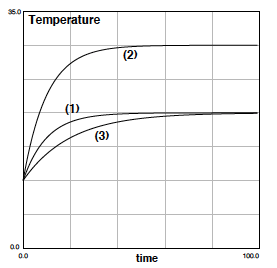Science:Math Exam Resources/Courses/MATH102/December 2014/Question A 07
{{#incat:MER QGQ flag|{{#incat:MER QGH flag|{{#incat:MER QGS flag|}}}}}}
• QA 1 • QA 2 • QA 3 • QA 4 • QA 5 • QA 6 • QA 7 • QA 8 • QB 1 • QB 2 • QB 3 • QB 4 • QB 5 • QB 6 • QB 7 • QC 1 • QC 2(a) • QC 2(b) • QC 2(c) • QC 2(d) • QC 3 •
|
Make sure you understand the problem fully: What is the question asking you to do? Are there specific conditions or constraints that you should take note of? How will you know if your answer is correct from your work only? Can you rephrase the question in your own words in a way that makes sense to you? |
|
If you are stuck, check the hints below. Read the first one and consider it for a while. Does it give you a new idea on how to approach the problem? If so, try it! If after a while you are still stuck, go for the next hint. |
Hint 1 |
|---|
|
How do we determine the steady state or increasing/decreasing rate from a differential equation obtained from Newton’s Law of Cooling? |
Hint 2 |
|---|
|
Try to analyze the statements one by one. Reason graphically what it would mean if the three objects were left in the same ambient temperature, or what changes if the initial values of the constant k differed in the objects. |
|
Checking a solution serves two purposes: helping you if, after having used all the hints, you still are stuck on the problem; or if you have solved the problem and would like to check your work.
|
Solution |
|---|
|
From the equation we observe the steady state temperature is , the ambient temperature, which means will approach as time goes to infinity. From the graph we see object (1) and (3) were kept in the same ambient temperatures and (2) was kept in a different ambient temperature(so (a) is wrong).
And as plots (1), (2) and (3) are all of the same value when , then they have the same initial temperatures(so (b) is wrong).
From the equation we know the constant controls how fast approaches , the larger the , the faster the rate. So comparing plots of (1) and (3) we find the for (1) was larger than the value of for (3) as (1) approaches to its steady state faster than (3)(so (c),(d) are wrong).
This leaves the only choice (e). |
{{#incat:MER CT flag||
}}








